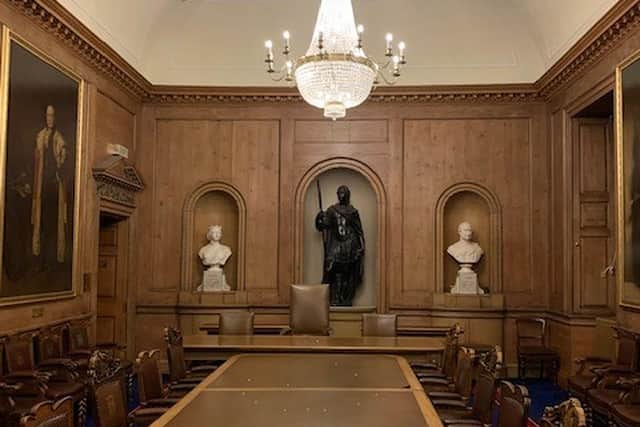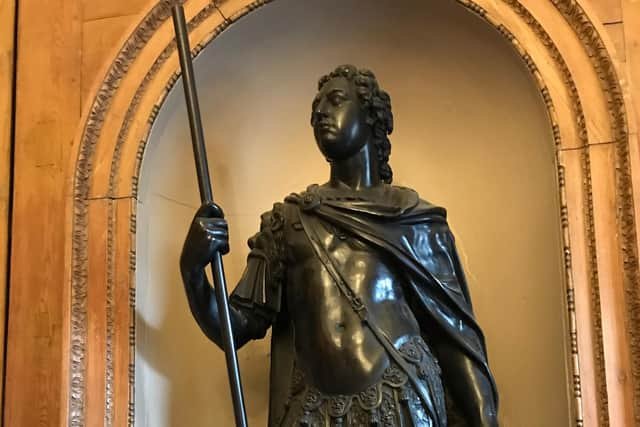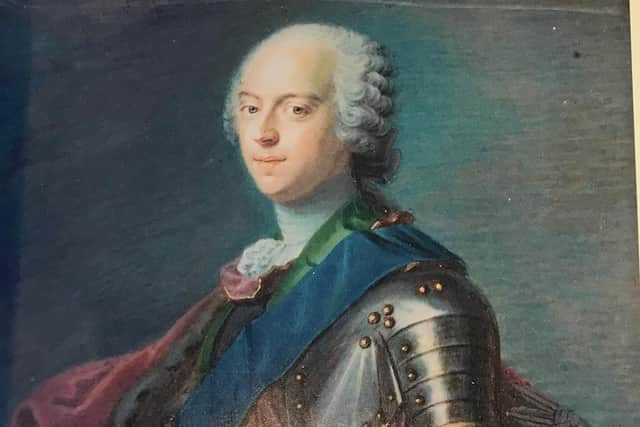'Lost' statue of Bonnie Prince Charlie found standing in Edinburgh City Chambers
Art historian Duncan Macmillan said the piece, which stands behind the Lord Provost’s chair in the Diamond Jubilee Room in the City Chambers, was “without doubt” a depiction of Prince Charles Edward Stuart, leader of the 1745 Jacobite Rising.
The statue, which depicts Charles as a Roman warrior to represent victory and is believed to be the only contemporary full-size depiction of the prince, may have been made in haste in France as he set sail for Scotland, but arrived too late to capitalise on his triumphant spell in Edinburgh following the Battle of Prestonpans.
Advertisement
Hide AdAdvertisement
Hide AdOne theory is it was stored in a Leith warehouse before arriving at St Giles’ Cathedral, where it lay out of sight given the ‘dangers and embarrassment’ of being associated with Prince, who was finally defeated at Culloden in April 1746.


The statue arrived in a crate at City Chambers in 1810 with elected members and officials long under the impression that it was either George III or Charles I.
Art history researcher Alyssa Robertson, author of a Capital View, The Art of Edinburgh, first made the connection between the statue and the prince, with Mr Macmillan, emeritus professor of the History of Scottish Art at Edinburgh University, then supporting her theory.
Ms Robertson said: “It’s a huge discovery. It’s an amazing, significant artwork to be discovered. None of the Jacobite experts know about the statue, it just seems to have slipped through.”
She became aware of the missing work after seeing a “strange” reference to a statue of Bonnie Prince Charlie in Roman dress in a council catalogue, which probably dated to the 1970s.


Ms Robertson first saw the statue after attending a reception for Polish Constitution Day at City Chambers in May last year, with the artwork presented as a depiction of Charles I.
Further research definitively linked the statue to Bonnie Prince Charlie after Ms Robertson spotted a heraldic device of a shield and two crossed weapons on the straps of his cuirass.
Mr Macmillan said it was a version of that devised for John III Sobieski, King of Poland – the great grandfather of Bonnie Prince Charlie – after his victory over the Turks at Vienna in 1683.
Advertisement
Hide AdAdvertisement
Hide AdMr Macmillan added: “This specific Sobieski device on his armour identifies beyond any doubt that he is Bonnie Prince Charlie. It also declares his ambition to follow the example of his heroic ancestor's victory over the Turks with his own victory over the Hanoverians.”


He said the statue was a “beautiful thing” in the style of sculptor Jean-Baptiste Lemoyne, who worked for Louis XV of France in the mid-18th century.
Mr Macmillan said: “It may take a while to determine whether or not the bronze is the work of Lemoyne, but it is clearly French and close to his style.”
He added: “After Culloden, it would have been an embarrassing, even a dangerous object to be associated with. The best thing to do was leave it in its box and let it be quietly forgotten. It is a fine irony of history that as a result, although the Stuart cause died in 1746, for more than two hundred years a Stuart Prince has presided over the meetings of Edinburgh City Council.”
Lord Provost Robert Aldridge said: “It’s fantastic to find out that one of the statues standing pride of place in our Diamond Jubilee Room is very likely to be Bonnie Prince Charlie. It has been a mystery for many years having always been believed to be Charles I or George III. I look forward to hearing more about this statue.”
Comments
Want to join the conversation? Please or to comment on this article.